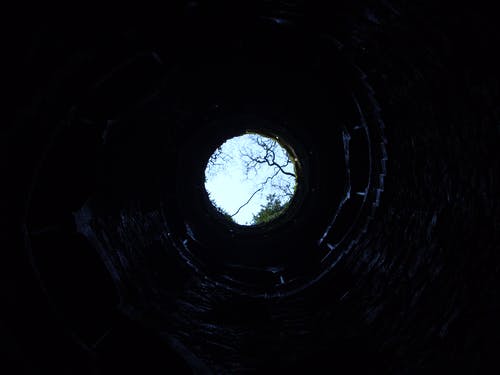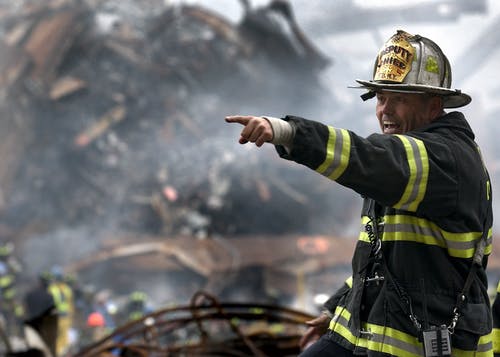Children are curious creatures; they usually want to explore their surroundings and can often stray away from their parents when focused on an adventure. Many times, a child could be out of sight from their parents and get into some serious trouble. Kids who love to climb trees can fall and break bones, while kids playing in a backyard might cut themselves on a stone or fall down a well. Unfortunately, sometimes these accidents can be life-changing or even fatal.
No matter how careful or vigilant a child’s parents or guardians are, sometimes a disaster just takes place regardless of all the precautions. Falling down a well, for instance, seems like a very unlikely thing to happen, but that’s what happened in 1987 to a little child named Jessica.
The Date and Place
In 1987, on October 14th, Jessica McClure was at her aunt’s place. She was just 18 months old at the time, and her aunt ran a day care center from her home in Midland, Texas. While this was probably not the first time that Jessica had been there and there were other children playing with her at the time, Jessica suddenly dropped into a well in the backyard.
The story takes a dark turn here, as well as a significant 22 feet deep. Furthermore, the child had no way of getting out and would be in the well for more than 48 hours.
How it Happened
The children were playing in the backyard, but they weren’t totally unsupervised. In fact, it was Jessica’s own mother, Cissy, who was overseeing the group. However, just at that moment, Cissy had one inside to attend a phone call.
Her daughter Jessica was running excitedly outside when she suddenly fell into a small opening. The hole was a mere 8 inches wide, but it was enough for the small child to fall through. The opening was supposed to have been covered with a rock, but it somehow got moved about.
Cissy soon heard the other children screaming (she herself was only 17 at the time, while Jessica’s father was 18). When she ran back outside, the children told her that Jessica had vanished. Luckily, Cissy soon realized what had happened and summoned the police at once.
The Media Coverage
First responders quickly flooded to the scene, with the local news media catching wind of the story as well. In a short time, the story was being aired live on channels like CNN. At the time, CNN was the sole news network that aired round the clock.
The matter wasn’t a simple one of lifting the child out of the well. It proved quite difficult to do that, as the well shaft was surrounded by only rock. With the ongoing efforts, this rescue became the focus of several parts of the world, not just America. With the near-tragedy of the case, the little girl was dubbed ‘Baby Jessica’ by both rescuers and the people watching the coverage on television.
The rescuers worked for at least 58 hours to free Baby Jessica from the narrow, suffocation, dark shaft. During that time, the communication between Jessica and the rescuers and the media coverage made the rescue a lasting memory for many people that year. It might not be one of the most major pop culture moments of 1987, but is still an important event that’s remembered to this day.
The Difficult Situation
The first issue with the resume was the narrow opening of the well shaft. This was eight inches, just barely more than the average hand span length of a male. At first, the rescuers were optimistic about making a speedy rescue. However, they soon realized that the task would be a very demanding and challenging one.
One of the first acts was to pump oxygen inside the well, as the lack of air could suffocate the child before anything else. Then, they lowered a mic down so that Jessica could communicate with the outside world.
Jessica was injured by the fall, which was not surprising given the 22-feet drop. The rescue team could hear her moaning with pain. However, she also sang ‘Winnie the Pooh’ after a while, which brought encouragement to everyone.
Eventually, the rescuers brought in a team of oil drillers to help with expanding the opening of the well. They made use of a machine called a rat-hole rig, which is used for plantain telephone poles in the ground. Their mission here was digging a hole large enough to access Baby Jessica.
Instead of making the hole itself larger, which would likely have hurt the baby, the machine was used to dig another hole just parallel to the shaft. This new hole was 30 inches wide and 20 feet deep. When this was done, a mining engineer made use of a then-new technology named waterjet cutting. With this method, they were able to make a tunnel directly from the new hole to the well shaft where Jessica was. Again, this tunnel was made for avoiding any harm to the baby, so it was situated around two feet below her exact location.
An Unusual Volunteer
A man called Ron Short, who worked as a roofing contractor, initially wanted to go inside the new tunnel made between the two holes. He thought he could manage to pull Baby Jessica to safety due to the unusual structure of his body. Short had been born with no collar bones, which meant that he could collapse his own shoulders and hence get into some very confined places.
While his volunteering was seriously considered, a paramedic named Robert O’Donnell was eventually able to get through and pull Jessica out. He then handed her up to another medic, after which Jessica was put in an ambulance.
Jessica’s Recovery
Even after a harrowing two and a half days, Jessica was able to completely recover from the ordeal. She did have a lasting scar on the forehead area due to rubbing on the well’s side. He toe was also amputated as it had gotten gangrenous from circulation loss in the shaft.
The way Jessica had fallen, she landed with one leg stuck above her head. Her foot was badly damaged as a result, resulting in her requiring fifteen surgeries. There were also several complications due to going almost three days without eating or drinking. Fortunately, the doctors were able to treat those as well.
Update on Baby Jessica
Due to her very young age at the time, Baby Jessica retained no memories of this event. Since she was only 1.5 years old at the time, she is far more likely to remember the important historical events of 2002.
When Jessica was five, she saw her rescue featured on ‘Rescue 911’. When she was told how the little girl was actually her, she was overcome with emotion.
Jessica led a pretty normal life after that rescue, graduating from high school in 2004 and getting married at the age of 19 in 2006. Now, she is a stay-at-home mom with two children. According to some sources, she is an assistant to a special ed teacher in a Midland elementary school.
Financial Support and Donations for Jessica
With the very young age of her parents and the number of surgeons she needed, it was evident that Jessica’s family could not afford all the expense of the medical rehabilitation. Fortunately, the viewers and other spectators who had followed her story stepped up to help.
With all the donations and support, Jessica’s hospital bills were soon paid for. She even had a trust fund that she could access when she was 25. According to her parents, this fund also paid for her education and necessities while she was growing up. She received the money in 2011, which was a total of around $800,000. Her plans were to save most of it for her children’s education.
Parents’ Support
Jessica’s father stated in an interview that he and Jessica’s mother did use some of the donations to buy a modest home in Texas. However, that money was either in the form of cash or made out directly to the parents. These checks couldn’t be deposited into the fund, so the parents used it in the way they saw fit.
Chip and Cissy McClure were also concerned about keeping their daughter out of the spotlight as much as possible. They only allowed the media to get an update about her twice while she was still a minor. As Jessica grew up, she also chose to keep her publicity level to a minimum.
Lasting Impact
Such a riveting event was likely to cause ripples all over the media, and the impacts of it are still present. Some of these include the following:
- There was a photo of Baby Jessica taken when she was finally carried out and away from the well. Scott Shaw from the newspaper Odessa American took the photo and won the Spot News Photography Pulitzer Prize for it in 1988.
- Jessica’s rescue was only the second one that received 24-hours news coverage at that point in time. The first one was the aftermath of the explosion of Challenger, the space shuttle. The Baby Jessica news just might have been the kick-starter for a media surge regarding 24-hour news.
- Unfortunately, the parents of Baby Jessica were not able to handle all the spotlight and attention after the event. They were not only subjected to a lot of publicity, but some even criticized both parents and aunt for the lack of attention for their child. Chip McClure also stated that he was a very shy 18-year old at the time, just having started a new job and dependent on others for legal help. Eventually, the stress resulted in the marriage ending just 2.5 years after Jessica’s rescue.
- Another unfortunate incident was the suicide of Robert O’Donnell in 1995. Being the person who pulled Jessica out, he enjoyed quite a lot of fame for some time. However, after the media attention stopped, he became depressed and was negatively influenced by other issues as well. Just four days before his suicide, he was watching the coverage of the bombing in Oklahoma city. At the time, he mentioned to his mother that the rescuers will need a lot of help as well. After his death, it was suggested that the recurring event in 1987 had partially led to him suffering from PTSD.
Conclusion
The ordeal of Baby Jessica was an important and impactful event at the time. While there have been many incidents of a child being endangered and in need of recusing, this particular incident stands out. Jessica was trapped in a highly uncomfortable and dangerous position, went without food or water for 58 hours, and received media coverage that was unprecedented in 1987. With the impact on new coverage, this ordeal is among the highlights of the major pop culture trend in the 1980s.


